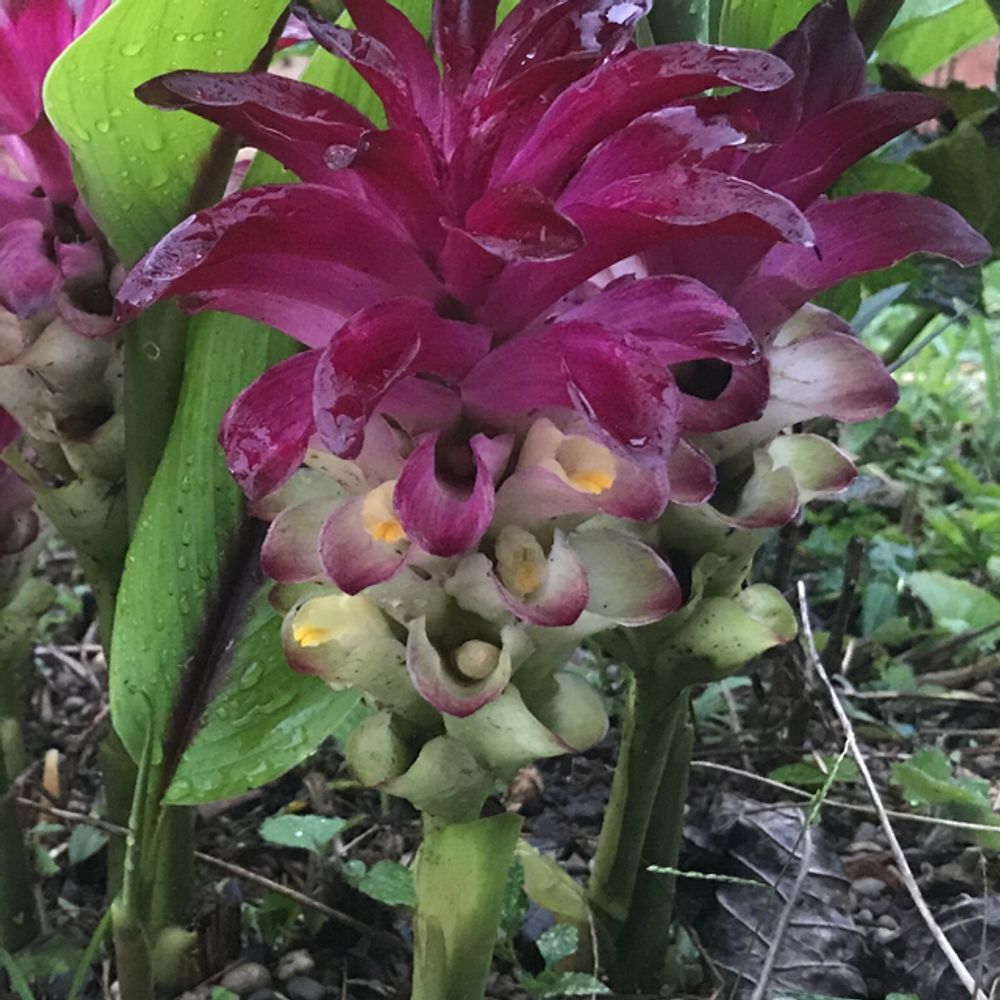East Indian arrowroot
(Curcuma angustifolia)

Description
Curcuma angustifolia is one of over 80 species belonging to the genus Curcuma , in the family Zingiberaceae. This species is native to the Indian subcontinent and is more commonly known as East Indian arrowroot or narrow-leaved turmeric in English, and is called "yaipan" in Manipuri, "Aipah" in Thadou-Kuki, "tikhur" in Hindi, and "Koova" in Malayalam, and is called "Kutupah" in Poula. In the Eastern hemisphere, the plant plays an integral role in many cultures Curcuma angustifolia is rhizomatous herb. It is a perennial and a flowering plant, with modest and small spiked inflorescences of three or four yellow, funnel-shaped flowers within tufts of pink terminal bracts (coma bracts). The bracts are boat-shaped and encase the entire perianth of the flower. As is common to the genus, the flowers of C. angustifolia have double anthers, a slender style, and a globular stigma. Flowers are usually seen at the beginning of the monsoon (rainy) season from July to August, before the leaves have had the chance to fully develop, and they continue to flower even after the leaves have fully developed. The calyx of the flower is usually 1 cm (0.39 in) long and very hairy, with 3 lobes that may appear to be triangular or obtuse. The corolla is white, and usually grows to be about 1.5–2 cm (0.59–0.79 in) long with glabrous lobes that are also hairy. Seeds are a reddish-brown color.
Taxonomic tree:







